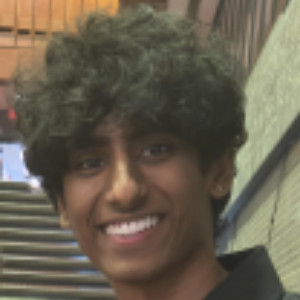Title : In silico analysis of CA3 replay prolongation and naturalistic sequence activity under pulsatile optogenetic stimulation
Abstract:
Optogenetic stimulation of hippocampal circuitry has been increasingly used to study sequence learning and memory (Geiller et al., 2023). Prolongation of spontaneously occurring sharp wave ripples (SPW-Rs) within the CA3 subregion of the hippocampus through optogenetic stimulation has been shown to improve memory during maze learning in vivo (Fernandez-Ruiz et al., 2019). However, while modulating neural activity through optogenetic stimulation, differences in the characteristics of light used introduce variability between experiments. Frequency, pulse duration, and waveform influence sequence learning and temporal distortion (Glickman et al., 2023). These parameters are standardized for single-pulse inputs (Wilmerding et al., 2022), but more complex inputs are better suited for inducing behavioral differences (Glickman et al., 2023). Here, we show the effects of waveform design, frequency, and duty cycling on prolonging replay to evoke a more reliable response. We performed a parameter sweep leveraging a rate-based neural model (Wilmerding et al., 2022) simulating a neural circuit exhibiting SPW-Rs between frequency 1-151 Hz and input duration 0-250 ms for a sinusoidal waveform and another parameter sweep between frequency 1-151 Hz and duty cycle 0-1 for square pulse waveforms. Within repeated square waves with a low maximum amplitude, we found the ideal duty cycle to be 30%-50%, while higher amplitude square waves exhibit lower temporal distortion at higher frequencies for duty cycles greater than 0.1. Sinusoidal waveforms with a low maximum amplitude and input durations between 110-130 ms best balance temporal distortion and sequence length; higher amplitude sinusoidals performed better with input durations between 50-55 ms across frequencies. We propose optimal frequency ranges for waveforms that prolong replay and minimize circuit disruption. Understanding optogenetic stimulation under a broader range of stimuli optimizes experimental methodology for in vivo translation.
Audience Take Away Notes:
- As optogenetics is a well known technique in the neuroscience community for studying various cognitive processes, the audience will be informed as to how to optimize their experimental procedures to yield reliable results by simulating them in silico first
- The scope of our research isn’t just limited to sharp wave ripples in the CA3 subregion of the hippocampus. In fact, other circuits can be modeled in a similar fashion and can be used to find optimal optogenetic stimulation parameters for the type of input prior to the experiment
- Designers’ jobs are made much more efficient as they are optimizing their experimental results without wasting any time/resources. Resultantly, accuracies may be improved for said outcomes depending on circuit/process is being studied
- Our results are specific to memory as the CA3 subregion is popularly studied for. For scientists interested in performing in vivo studies of memory, these parameters can be considered as a basis for obtaining favorable/significant results




